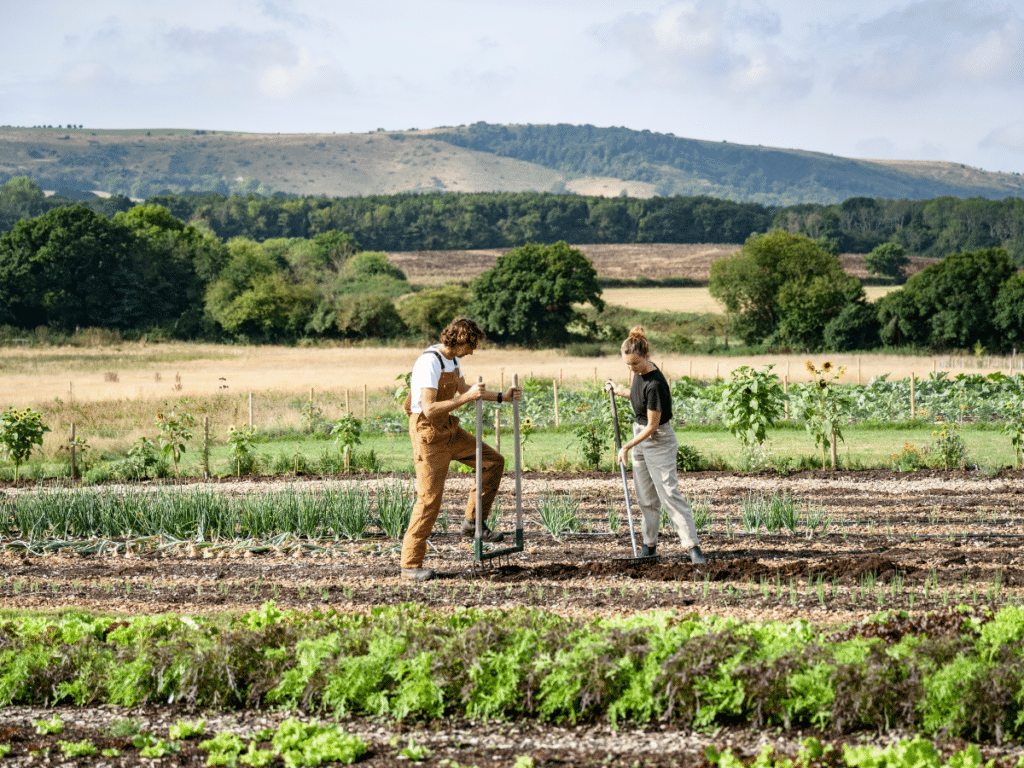But what exactly do we mean by the term regenerative farming? Who are its advocates? Here, we explore some of these questions, as well as the potential of regenerative methods to improve the ecological and financial resilience of those who manage the land.
Defining Regenerative Farming
There are some widely accepted principles about what regenerative methods are trying to achieve; shared ecological outcomes which seek to improve the resilience of agricultural systems.
Gabe Brown’s book From Dirt to Soil: One family’s Journey into Regenerative Agriculture is a good place to start when learning about the regenerative movement. In his work, he outlines 5 core principles for farming regeneratively, which are:
- Limit disturbance of the soil and its structure
- Provide the soil with ‘armour’ (cover) to protect against wind erosion and runoff whilst providing habitat for key organisms
- Maintain diversity of plant and animal species
- Sustain living roots in the soil for as long as possible throughout the year
- Integrate animals to promote nutrient cycling
“5 Principles of Regenerative Agriculture”. Credit: Groundswell
However, precisely defining ‘regenerative’ farming is challenging. Many organisations and practitioners, ranging from small-scale agro-ecological farms to multinational corporations, now claim to farm ‘regeneratively’. As a result, much like the term ‘sustainability’, it risks losing its value amongst a chorus of conflicting definitions.
To be regenerative can mean different things to different people, for example, low-input monocropping using cover crops will improve soil structure and health, yet differs from a mixed agroecological farm. Both could reasonably claim to be ‘regenerative’.
Clearly, there is some common ground among practitioners. A recent academic paper reviewed definitions from scientific literature and practitioner’s websites, and found the most common aims were similar to those above; to improve soil health, sequester carbon, increase biodiversity, improve water resources and enhance the social or economic well-being of communities.
Regenerative Farming Certifications
As both practitioner and consumer appetite for regenerative methods grows, the challenge of certifying emerges with it. It poses the question – can you certify a process and outlook, rather than a fixed set of methods? A few companies have emerged with their own labels – the Soil Association highlight that organic farming is regenerative, and therefore their accreditation also falls under this category. Pasture For Life, meanwhile, is newer and exists to certify its products as 100% grass-fed for meat, milk and dairy. What both organisations have in common is an emphasis on the environmental regeneration that comes alongside farming. Regenerative ‘certifications’ might never be able to align unless policy dictates a specific, well-established definition. However, their emergence and increasing popularity represent a clear paradigm shift in the way farming and consumption is being articulated.
Agroecology?
Agroecology is a term that often emerges in the regenerative conversation. But what’s the difference? To some, they are essentially two sides of the same coin – agroecology celebrates regenerative methods and vice versa. However, its advocates tend to emphasise more of a social aspect; it represents a holistic and integrated approach to agriculture and food systems recognising the interrelation of plants, animals, humans, and the environment. Diversity is also at its core – of crops, people and livestock. Where regenerative methods can focus on improving soil structure in isolation, agroecology calls for considering how we can optimise the relationships between people and the environment that underpin these farming practices, creating a more resilient environment for all.
“That’s Agroecology”. Credit Soil Association
Groundswell – The Regen Ag festival
Whilst it may remain slightly imprecise in terms of methods and definitions, regenerative farming continues to grow in popularity. Groundswell Festival, the annual festival celebrating and exploring regenerative methods, was the largest it’s ever been last year. From a small gathering a few years ago, to a national agricultural event, conversations about regeneration are increasing far and fast. As policy shifts towards rewarding environmental goods; increased carbon sequestration, habitat enhancement and soil health – regenerative approaches can potentially be well rewarded not only by higher consumer prices but also by emerging markets seeking to invest in ‘natural capital’.
Alongside movements like groundswell, agri-environment schemes like Countryside Stewardship, Sustainable Farming Incentive (SFI) and other parts of ELMs are moving to provide better financial support for regenerative farming. As farming evolves from the ground-up and policy down to meet it, one thing is clear – regenerative farming is here to stay.

